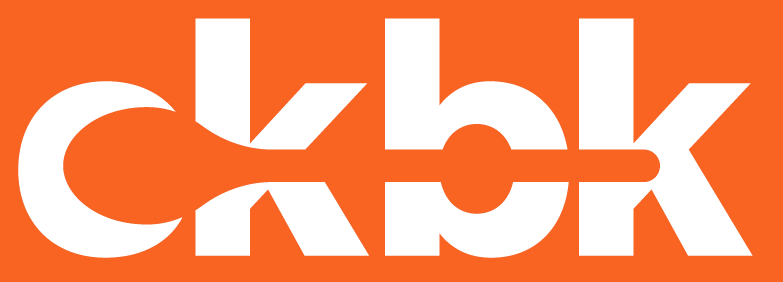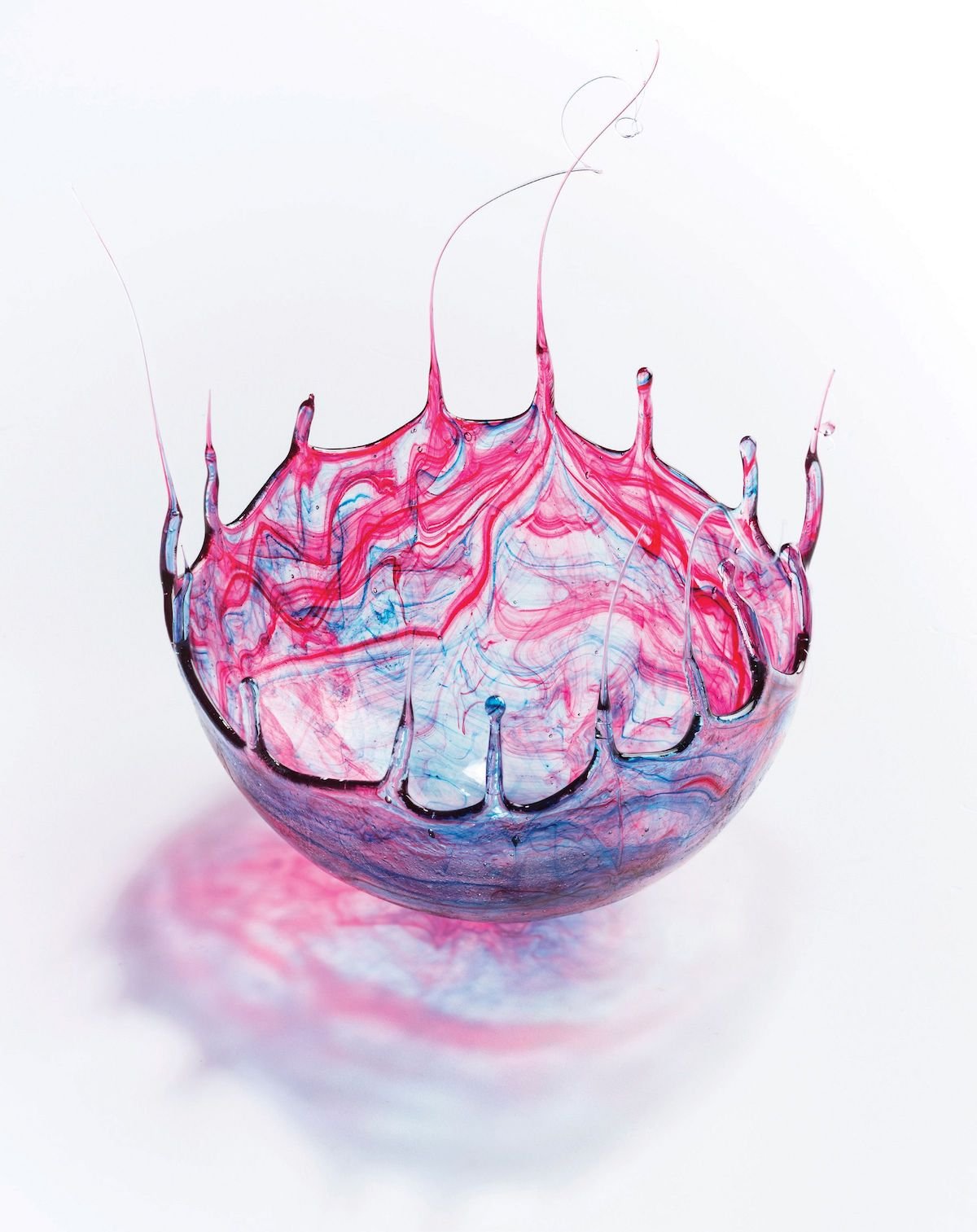Q&A with Ann Reardon, author of Crazy Sweet Creations
By Matthew Cockerill
Ann Reardon’s baking-focused YouTube Channel ‘How to Cook That’ has almost 5 million subscribers, so her debut cookbook, Crazy Sweet Creations (published in July 2021 and now available on ckbk) was hotly anticipated.
Ann’s background as a food scientist and dietician is key to the success of both the channel and the book. Her recipes taste great and they give readers valuable technical insight into topics such as how to temper chocolate or how the amount of fat you use will affect the texture of your sponge cake. Reardon earned fame making pop-culture-themed treats, from a giant KitKat to a 3D Avenger’s Cake, and by debunking fake online cooking hacks.
The book’s recipes range from spectacular Sugar Snow Globe Desserts to uber-cute Heart Inside Cupcakes. The techniques used, while often borrowed from high-end restaurant kitchens, are clearly explained and made accessible to any home cook. When adding Ann’s book to ckbk, we embedded videos from her YouTube channel at the end of her recipes, where relevant, to make it easy to check on key technical points.
We spoke to Ann about her cookbook, her path to becoming a YouTube cooking sensation – and we also spoke about the challenges that creators face on channels dominated by artificial intelligence (AI) algorithms seeking maximum clicks.
Q&A with Ann Reardon
“Some time ago, I was looking through my mum’s bookshelf and found a two-hundred-year-old cookbook. I gently held this piece of culinary history; its pages were stained with age and the cover was falling apart. I have since made many desserts from that book, including a fruit mince pie with meat in it and strawberry ice cream with bugs!”
Q So I have to ask: what was the book you refer to?
The Housekeeper’s Instructor; Or, Universal Family Cook — Being a Full and Clear Display of the Art of Cookery in All Its Branches by William Augustus Henderson (Jacob Christopher Schnebbelie, 1805)
Q Did your enthusiasm for cooking and baking show itself from an early age? To what extent did you learn from your mum?
As children we were rarely allowed to buy chocolate or lollies, so baking was the best way to get sweet treats. My mum taught me how to separate eggs and how to make basic cookies and cakes. She made us a special birthday cake each year and was always happy for me to bake, as long as I cleaned up after myself.
Q You mention that you prefer to cook sweet rather than savory dishes. Does your husband tend to cook the main meal? Is he a good cook and does he use cookbooks?
I try to keep all the main meals healthy for the family because I feel responsible that what I put into that shopping trolley is what they will consume. Desserts, on the other hand, are treats, so they can be more unhealthy – and they allow for so much more creativity. In more recent years, [my husband] Dave has extended his cooking menu from baked beans, cheese toasties, and spaghetti bolognese to now include many yummy family meals. I have never seen him use a cookbook.
“As I began researching old cookbooks and their authors, I found myself inspired to write my own. Yes, I have a website and a YouTube channel with hundreds of episodes, but there is something special about a book – the permanency of print. A website can be hacked, and YouTube may be long gone in two hundred years. But a book – this book – well, I’d love to think that it is a small slice of history to be enjoyed right now, shared with friends, and eventually passed on to the next generation.”
Q It’s great to hear of your enthusiasm for cookbooks to capture culinary heritage – which, of course, we share! Could you name a few cookbooks that you think have really stood the test of time?
Baking today is so easy when compared to two hundred years ago. Imagine having to milk a cow and then make a soft cheese before you could start preparing a baked cheesecake! We just turn on the oven but they had to gather wood and light the stove. Some of the early chefs suffered from lung problems due to smoke inhalation. If I had to recommend just one old cookbook it would be The Art of Cookery by Hannah Glasse (1747).
Q Any favorite newly published cookbook authors?
I have thoroughly enjoyed every recipe that I’ve tried from New Kitchen by Karen Martini. Her combinations of spices have taken my soups to a new level.
Q Your Chocolate Lava Cake was inspired by chef Peter Gilmore’s Eight-Texture Chocolate Cake (one of ckbk’s most frequently accessed recipes). You make your channel accessible to home cooks but you also cover techniques popular with professional chefs – for example, microwave sponge cake aerated using a cream-whipper or sodium alginate ‘sphericals’. How do you feel about fancy restaurant cooking? Do you get ideas from restaurant chefs and their cookbooks?
Fancy restaurant cooking is fantastic if chefs are given the chance to experiment and be creative. Too often they are so busy fulfilling orders that there is no chance to dream. The Chocolate Lava Cake video is from eight years ago, around the time that many restaurants started to experiment with the theatrical element of desserts and main meals once they reach the table. In my experience, this sort of playfulness relaxes people and gets the conversation and laughter flowing. It is interesting to note that this was the same year that Instagram started allowing users to upload videos instead of just photos. Theatrical dishes like Melting Chocolate ’n’ Peanut Balls and the Chocolate Lava Cake took advantage of this by giving people something Insta-worthy to post to their feed.
Often my subscribers have requested dishes for which the recipe is not yet published, so I shout out to the original chef, then look at the description of the dish and try to simplify it, removing any ingredients and tools that a home cook could not easily access. Going to a fancy restaurant is completely out of reach for most people in the world, so being able to recreate a similar experience at home is a great alternative.
In some instances, such as the aerated sponge, sphericals, or aerated chocolate bar, there is no way to make it without special equipment but viewers still enjoy seeing how the result is achieved.
Q You are based in Australia and your YouTube channel, ‘How to Cook That,’ reaches a global audience. Do you think there is a specifically Australian approach to your baking?
I am acutely aware of the worldwide audience and try to give international measurements and ingredient alternatives. I can’t speak for all Aussies but my approach is honest and down-to-earth. If something doesn’t work then I’ll show the viewers my fail so that they can avoid making the same mistake. Then I’ll also show them how to correct it.
Q You started ‘How to Cook That’ back in 2011. Was there any particular event or factor that motivated you?
Taking a year off for maternity leave following the birth of my third son was the spark that made me start my website and consequently the YouTube channel. During night feeds I would work on my computer and slowly build the website (www.howtocookthat.net). The website and channel grew slowly over time. I am still amazed and humbled when I upload a video and a few days later it has been watched by more than a million people. That is still mind-boggling to me.
Q Your projects deliver incredible results and you make it all look very easy. Have there been any projects that were a particular challenge to pull off, and have you had any disasters along the way?
If there are disasters en route then I include them in the video. That way I can show people potential hazards to avoid. When I am developing something new like the Candy Sugar Balloon Bowls, it often takes a lot of experimentation to get it perfect and I share that process in my videos. Many people have commented that this inspires them to be more creative and experiment in the kitchen for themselves.
Q Alongside your recipes and projects, some of your most popular episodes look at the weird world of faked food content – channels with billions of views that feature recipes and hacks which, as you show, simply don’t work and that may even be dangerous, but that are created and promoted by algorithms to maximize revenue from clicks and shares. How concerned are you by this, and do you have any suggestions to improve matters?
Fake recipe content is a big concern for two main reasons – the first is that it is essentially miseducating the younger generation about cooking and food science. The second is that it is pushing some legitimate chefs and bakers off social media platforms. They simply can’t compete with algorithmically charged constant uploads and clickbait. When platforms let artificial intelligence algorithms choose what the world should watch (based on metrics carefully measured to make the most profit for the platform) then you get some strange outcomes.
Solutions are not simple because the platforms exist to make money for themselves and their shareholders. If they continue to allow bad actors to profit, then more companies will rise up and copy the same strategies, which is what we are seeing now. If I had a say in the matter, then I would start by carefully reviewing which channels are rising to the top of each genre and make adjustments to the algorithm accordingly. But if that tweak is at the expense of profits, we all know which one the platforms would choose.
Explore all the recipes in Crazy Sweet Creations on ckbk.
More popular recipes from Ann’s book
Related features from ckbk
An introduction to ckbk’s wide range of titles from Australian chefs authors
We spoke to Ruth about the research she conducted into ancient and heritage grains.
Sharon talks about her book Growing Up in a Nonya Kitchen.








